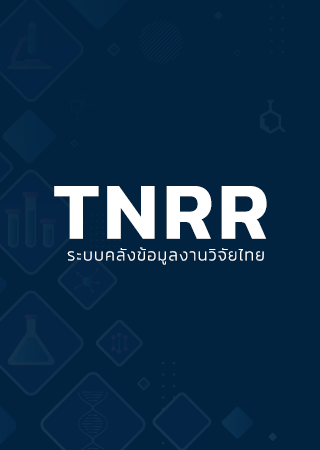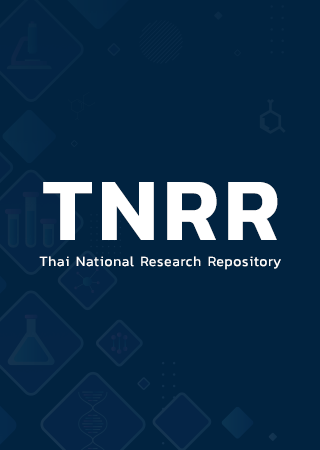ปัจจัยที่มีอิทธิพลต่อความตั้งใจที่จะออกจากงานของพนักงาน

โดย อ. ดร. มัลลิกา สังข์สนิท
หมวดหมู่
รายงานการวิจัย
ประเภทสื่อ
eBook
0
(0 รีวิว)
จำนวนคงเหลือ
:
Share
รายละเอียด
บทคัดย่อภาษาไทย
การวิจัยเรื่อง “ปัจจัยที่มีอิทธิพลต่อความตั้งใจที่จะออกจากองค์การของพนักงาน” มีวัตถุประสงค์ (1) เพื่อศึกษาเปรียบเทียบความแตกต่างของระดับความคิดเห็นต่อองค์กร โอกาสงาน ภาระความรับผิดชอบในครอบครัว ระดับความพึงพอใจในงาน ความผูกพันทุ่มเทให้กับองค์กร และความตั้งใจจะออกจากงานของพนักงานในอุตสาหกรรมการผลิตในจังหวัดนครราชสีมาที่มีระดับผลการปฏิบัติงานแตกต่างกัน (2) เพื่อศึกษาปัจจัยที่มีอิทธิพลในการทำนายความตั้งใจที่จะออกจากงานของพนักงานในอุตสาหกรรมการผลิตในจังหวัดนครราชสีมา (3) เพื่อศึกษาลักษณะความสัมพันธ์ของปัจจัยสิ่งแวดล้อมขององค์กร ปัจจัยทางจิตวิทยา และปัจจัยทางสิ่งแวดล้อมภายนอก ต่อความตั้งใจที่จะออกจากงานของพนักงาน ใช้วิธีวิจัยเชิงสำรวจ (Survey Research) โดยมีหน่วยวิเคราะห์คือพนักงาน กลุ่มตัวอย่างคือพนักงานในวิสาหกิจขนาดกลางและขนาดใหญ่ในจังหวัดนครราชสีมา ประมาณ 1,111 คน จากทั้งหมด จำนวน 11 บริษัท จากกลุ่มอุตสาหกรรมแปรรูปการเกษตร และอุตสาหกรรมชิ้นส่วนยานยนต์และอิเล็กทรอนิกส์ การเลือกกลุ่มตัวอย่าง แบ่งเป็นการเลือกบริษัท นั้นจะใช้วิธี Purposive Sampling ซึ่งใช้เกณฑ์กลุ่มอุตสาหกรรมที่เป็นกลุ่มใหญ่ของจังหวัดนครราชสีมา ขนาดขององค์การ และการเข้าถึง ส่วนในส่วนการเลือกกลุ่มตัวอย่างพนักงานใช้วิธีการเลือกแบบ Quota Sampling โดยแต่ละแห่งเลือกกลุ่มตัวอย่างพนักงานประมาณ แห่งละอย่างน้อย 50 คน และแบ่งพนักงานเป็น 3 กลุ่ม คือ กลุ่มที่มีผลการปฏิบัติงานระดับดีมาก กลุ่มที่มีผลการปฏิบัติงานระดับดี และกลุ่มที่มีผลการปฏิบัติงานระดับปานกลาง การวิจัยนี้ใช้แบบสอบถามเป็นเครื่องมือในการวิจัย โดยเครื่องมือที่ใช้นั้นแต่ละตัวแปรมีค่าสัมประสิทธิ์ ? ของ Cronbach ตั้งแต่ 0.70 ขึ้นไปทุกตัวแปร และในการวิเคราะห์ข้อมูลเพื่อตอบวัตถุประสงค์การวิจัย ใช้ การวิเคราะห์ ANOVA และวิเคราะห์ความสัมพันธ์ระหว่างตัวแปรโดยใช้ สัมประสิทธิ์สหสัมพันธ์แบบเพียร์สัน การวิเคราะห์ยืนยันปัจจัยองค์ประกอบ และการวิเคราะห์เชิงโครงสร้าง โดยใช้ โปรแกรมทางสถิติ SPSS และ SPSS AMOS เพื่อทดสอบโมเดลกรอบแนวคิดการวิจัย
ผลการศึกษาเปรียบเทียบระดับความคิดเห็นของพนักงานต่อองค์กรในปัจจัยด้าน ความอิสระในการปฏิบัติงาน โอกาสในการพัฒนาและความก้าวหน้า การสื่อสาร การบริหารผลการปฏิบัติงาน ความยุติธรรมในการจ่ายค่าจ้างและรางวัล ความขัดแย้งในบทบาท ภาระงาน การสนับสนุนของหัวหน้างาน การสนับสนุนของเพื่อนร่วมงาน โอกาสงาน ภาระความรับผิดชอบงานในครอบครัว ความพึงพอใจของพนักงาน ความผูกพันทุ่มเทให้กับองค์การ และความตั้งใจจะลาออกจากงานของพนักงาน โดยเปรียบเทียบตามกลุ่มระดับผลการปฏิบัติงาน พบว่า มีเพียงความคิดเห็นของพนักงานในด้านการสนับสนุนของหัวหน้างาน และ ความคิดเห็นต่อความอิสะในการปฏิบัติงาน มีความแตกต่างกันอย่างมีนัยะสำคัญทางสถิติ และผลการศึกษาชี้ว่าปัจจัยที่ทำนายความตั้งใจจะออกจากงานของพนักงานในอุตสาหกรรมการผลิตในจังหวัดนครราชสีมาที่ดีที่สุด ประกอบไปด้วย (1) โอกาสงาน (2) ความผูกพันและทุ่มเทให้กับองค์การ (3) ความขัดแย้งในบทบาท (4) การสนับสนุนของเพื่อนร่วมงาน (5) ภาระงาน (6) การสนับสนุนของผู้บริหาร (7) ความอิสระในการปฏิบัติงาน และ (8) โอกาสในการพัฒนาและความก้าวหน้า โดย โมเดลที่ได้นี้สามารถอธิบายความตั้งใจจะลาออกจากงานนี้ได้ ร้อยละ 41.70
ผลการทดสอบโมเดลทำนายความตั้งใจออกจากงาน พบว่าปัจจัยด้านสภาพแวดล้อมในองค์การ มีอิทธิพลต่อความตั้งใจจะลาออกจากงานของพนักงานทั้งทางตรงและทางอ้อม อิทธิพลทางอ้อมนั้นก็จะผ่านปัจจัยด้านจิตวิทยา ได้แก่ ความพึงพอใจในงานและความผูกพันทุ่มเทให้กับองค์การ โดยความพึงพอใจในงานไม่มีอิทธิพลทางตรงกับความตั้งใจจะลาออกจากงาน มีเพียงอิทธิพลทางอ้อมโดยผ่านความผูกพันทุ่มเทของพนักงานเท่านั้น ความผูกพันทุ่มเทให้กับองค์การมีอิทธิพลทางตรงกับความตั้งใจจะลาออกจากงาน ด้านปัจจัยสิ่งแวดล้อมภายนอก ได้แก่ โอกาสงานจากภายนอก และภาระความรับผิดชอบงานในครอบครัว มีผลที่น่าสนใจ นั่นคือ โอกาสงานจากภายนอกมีอิทธิพลทั้งทางตรงและทางอ้อมต่อความตั้งใจจะลาออกจากงาน โดยอิทธิพลทางอ้อมจะผ่านความผูกพันทุ่มเทให้กับองค์การของพนักงาน แต่ภาระความรับผิดชอบงานในครอบครัว มีอิทธิพลทางตรงกับความผูกพันทุ่มเทให้กับองค์การ แต่มีอิทธิพลทางอ้อมกับตั้งใจจะลาออกจากงาน และ ปัจจัยทุนทางสังคมของพนักงานนั้น มีอิทธิพลทั้งทางตรงและทางอ้อมต่อ ตั้งใจจะลาออกจากงาน โดยอิทธิพลทางอ้อมนั้นจะผ่านความพึงพอใจใจงานและความผูกพันทุ่มเทให้กับองค์การ โมเดลที่ได้นี้สามารถอธิบายความแปรปรวนในการพยากรณ์ความพึงพอใจในงาน ได้ร้อยละ 64 อธิบายความแปรปรวนในการพยากรณ์ความผูกพันทุ่มเทให้กับองค์กร ได้ร้อยละ 36 และสามารถอธิบายความแปรปรวนในการพยากรณ์ความตั้งใจจะออกจากงาน ได้ร้อยละ 35
Abstract The objectives of the study of factors Influencing employees’ turnover intention are (1) to compare the mean difference of employees’ perception toward organization, job opportunity, kinship responsibility, job satisfaction, employee engagement, and turnover intention among the different work performance groups of employees in the manufacturing industry in Nakhon Ratchasima province, (2) to study the factors that can predict employees’turnover intention, and (3) to study the type of relationship among the organizational environment variables, psychological variables, external environmental variables, and employees’ turnover intention. This study adopted the survey research method in which individual employee is the unit of analysis. The sample are the 1,111 employees from the 11 medium and large corporations in the agricultural processing and auto part and electronics manufacturing industries. The sample were selected using purposive sampling for the organizations and then quota sampling for the employees. There are at least 50 employees from each corporation. The employees were also divided into 3 groups according to their job performance, namely high performance, good performance, and average performance groups. Questionnaire is a method of data collection. Each factor is the questionnaire pass the minimum accepted level of Cronbach ?, that is 0.70. The ANOVA, Pearson Correlation, Multiple Regression Analysis, Confirmatory Factor Analysis, and Structural Equation Modeling were used to analyze the data using SPSS and AMOS statistical program. The results of this study showed that employees ‘perception regarding factors; job autonomy, career opportunity, communication, fairness in compensation and benefit, role conflict, workload, performance management, management support, job supervisor support, co-worker support, job opportunity, kinship responsibility, job satisfaction, employee engagement, and turnover intention, were not difference among 3 performance groups. There were only 2 factors that different performance group of employees perceived differently, which were job supervisor support and job autonomy. The multiple regression model test result yielded 7 factors that could predict employees’ turnover intention; which were job opportunity, employee engagement, role conflict, co-worker support, workload, top management support, and job autonomy. The model could explain 41.70% of variance in predicting turnover intention. The result of Structural Equation Modelling test of the model showed that organizational environment variables had both direct and indirect effects on employees’ turnover intention. The indirect effect would be through the employee engagement. Employee engagement had direct effect on turnover intention. Interestingly, job satisfaction did not show direct effect on turnover intention, but had indirect effect through employee engagement. External environmental variables as job opportunity had shown both direct effect and indirect effect on turnover intention. Kinship responsibility had shown only indirect effect on turnover intention but had direct effect on employee engagement. Social capital of the employee had shown both direct and indirect effect on turnover intention. Social capital had indirect effect on turnover intention through employee job satisfaction and engagement. This SEM model could explain 64% of variance in predicting job satisfaction, and 36% of variance in predicting employee engagement, and 35% of variance in predicting turnover intention.
Abstract The objectives of the study of factors Influencing employees’ turnover intention are (1) to compare the mean difference of employees’ perception toward organization, job opportunity, kinship responsibility, job satisfaction, employee engagement, and turnover intention among the different work performance groups of employees in the manufacturing industry in Nakhon Ratchasima province, (2) to study the factors that can predict employees’turnover intention, and (3) to study the type of relationship among the organizational environment variables, psychological variables, external environmental variables, and employees’ turnover intention. This study adopted the survey research method in which individual employee is the unit of analysis. The sample are the 1,111 employees from the 11 medium and large corporations in the agricultural processing and auto part and electronics manufacturing industries. The sample were selected using purposive sampling for the organizations and then quota sampling for the employees. There are at least 50 employees from each corporation. The employees were also divided into 3 groups according to their job performance, namely high performance, good performance, and average performance groups. Questionnaire is a method of data collection. Each factor is the questionnaire pass the minimum accepted level of Cronbach ?, that is 0.70. The ANOVA, Pearson Correlation, Multiple Regression Analysis, Confirmatory Factor Analysis, and Structural Equation Modeling were used to analyze the data using SPSS and AMOS statistical program. The results of this study showed that employees ‘perception regarding factors; job autonomy, career opportunity, communication, fairness in compensation and benefit, role conflict, workload, performance management, management support, job supervisor support, co-worker support, job opportunity, kinship responsibility, job satisfaction, employee engagement, and turnover intention, were not difference among 3 performance groups. There were only 2 factors that different performance group of employees perceived differently, which were job supervisor support and job autonomy. The multiple regression model test result yielded 7 factors that could predict employees’ turnover intention; which were job opportunity, employee engagement, role conflict, co-worker support, workload, top management support, and job autonomy. The model could explain 41.70% of variance in predicting turnover intention. The result of Structural Equation Modelling test of the model showed that organizational environment variables had both direct and indirect effects on employees’ turnover intention. The indirect effect would be through the employee engagement. Employee engagement had direct effect on turnover intention. Interestingly, job satisfaction did not show direct effect on turnover intention, but had indirect effect through employee engagement. External environmental variables as job opportunity had shown both direct effect and indirect effect on turnover intention. Kinship responsibility had shown only indirect effect on turnover intention but had direct effect on employee engagement. Social capital of the employee had shown both direct and indirect effect on turnover intention. Social capital had indirect effect on turnover intention through employee job satisfaction and engagement. This SEM model could explain 64% of variance in predicting job satisfaction, and 36% of variance in predicting employee engagement, and 35% of variance in predicting turnover intention.
ข้อมูลเพิ่มเติม
| วันที่เผยแพร่ | 05/2022 |
| สำนักพิมพ์ | มหาวิทยาลัยเทคโนโลยีสุรนารี |
| หมวดหมู่ | รายงานการวิจัย |
| จำนวนหน้า | 77012 |
People Who Read This Also Read
รีวิว

